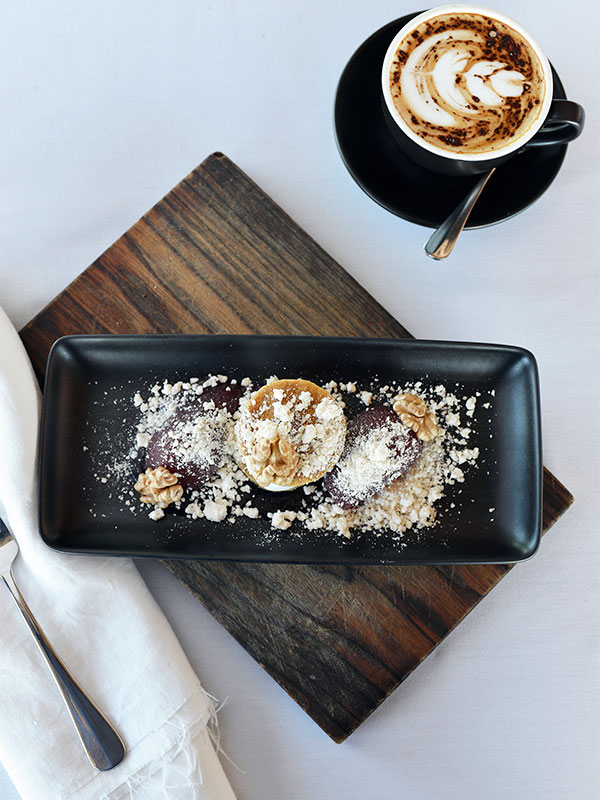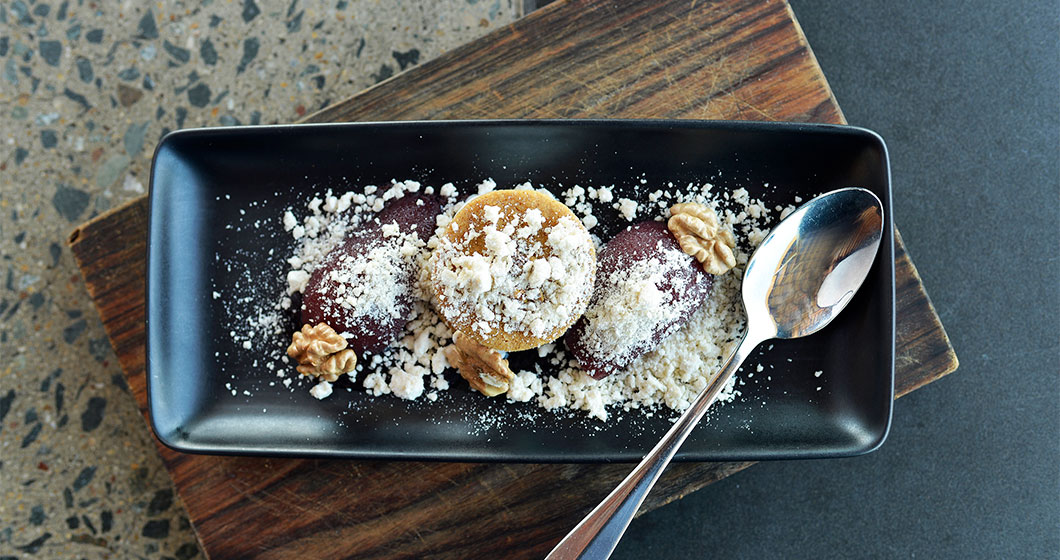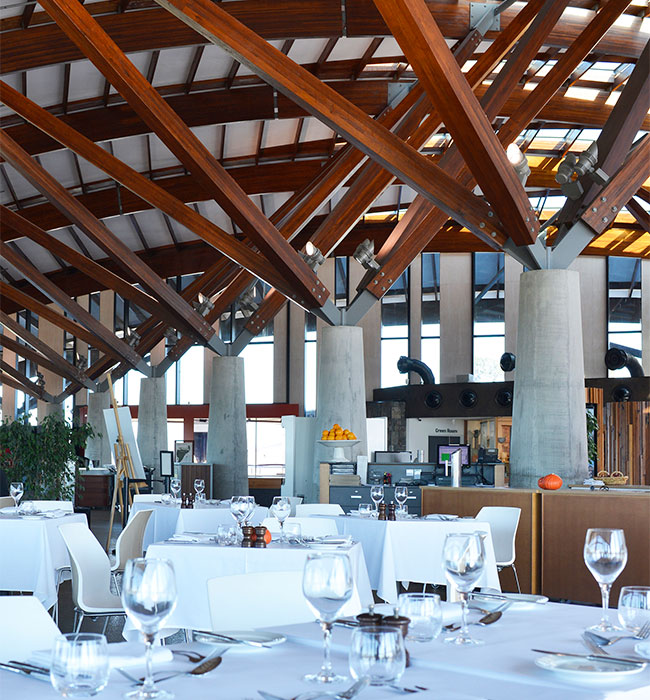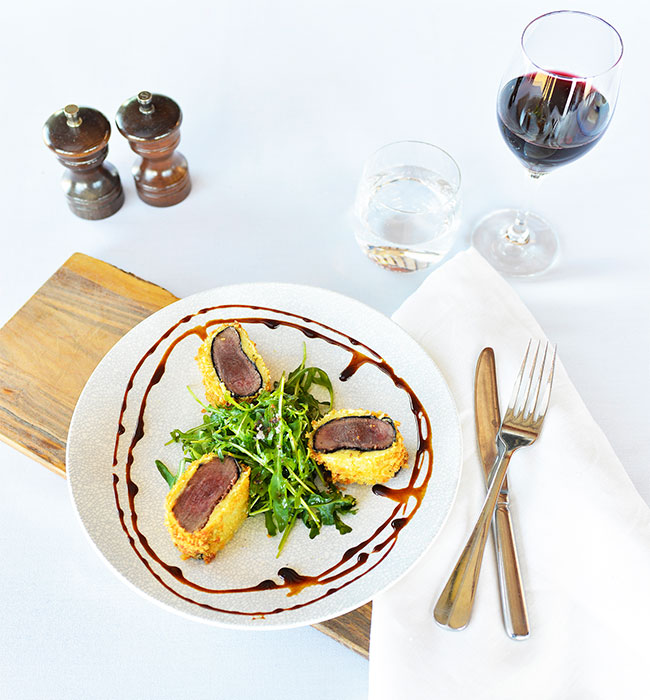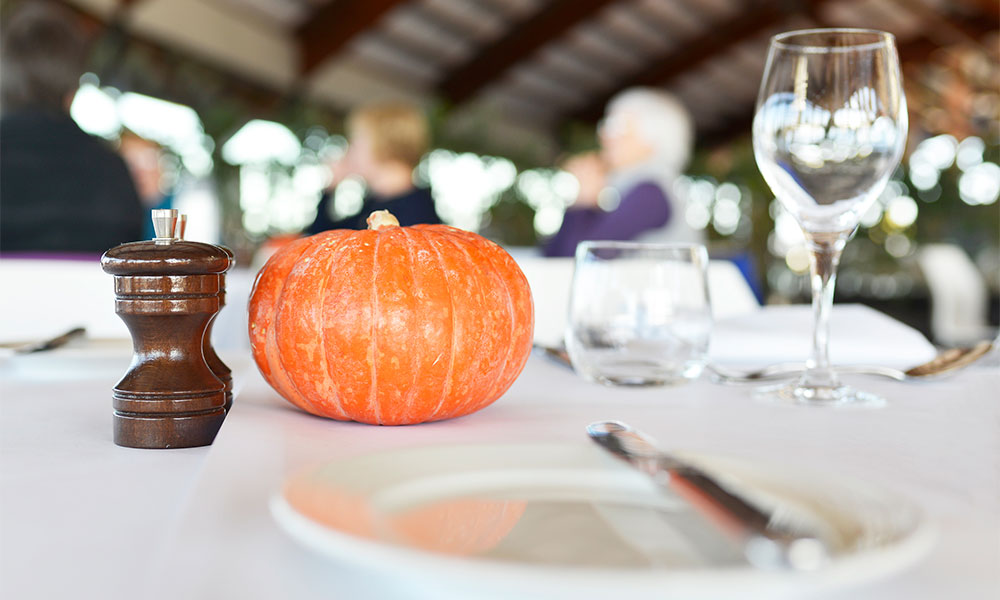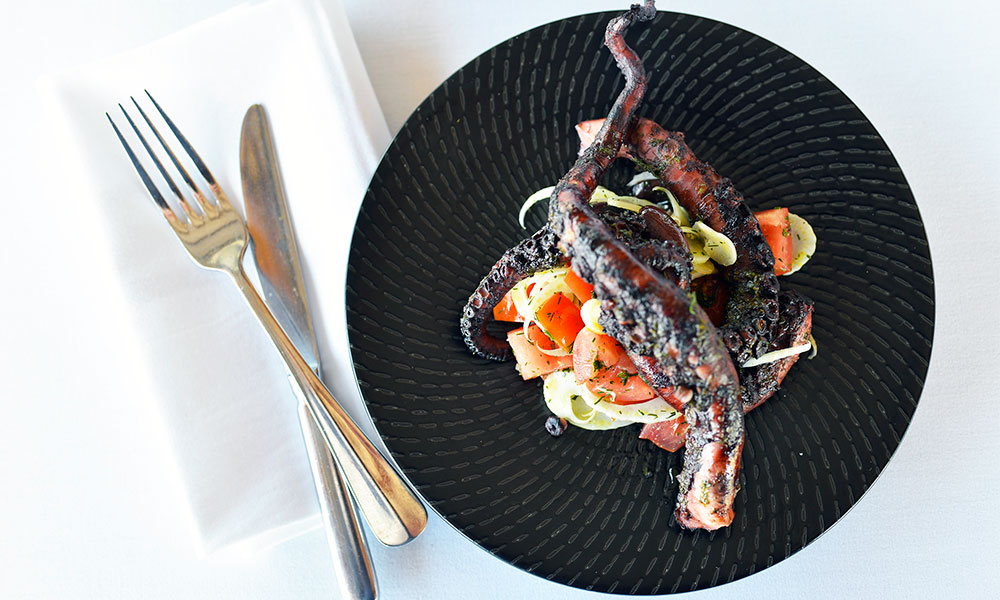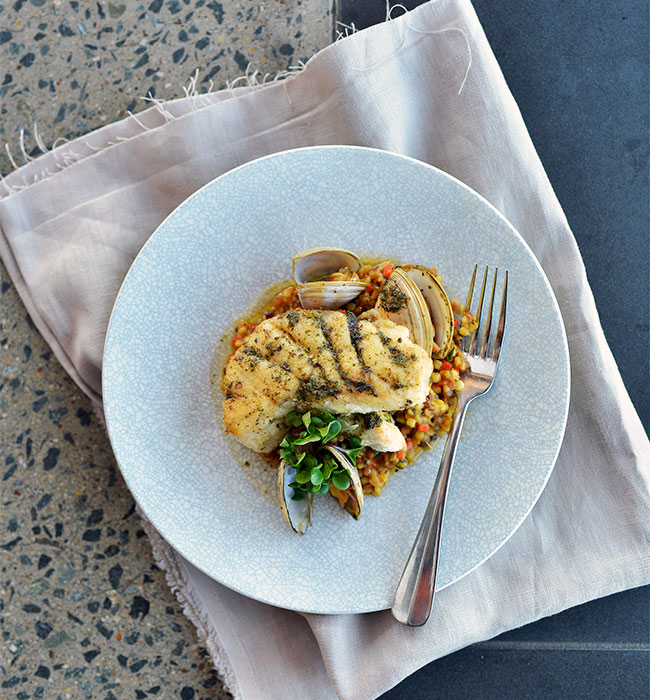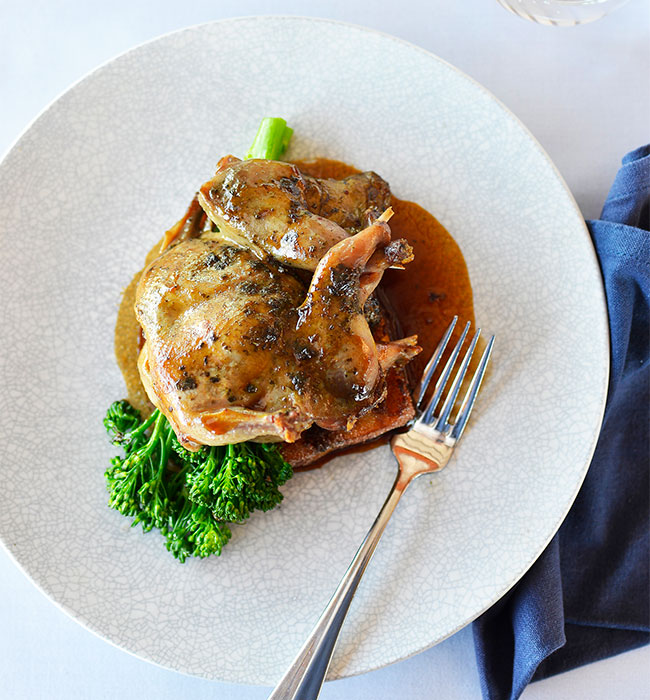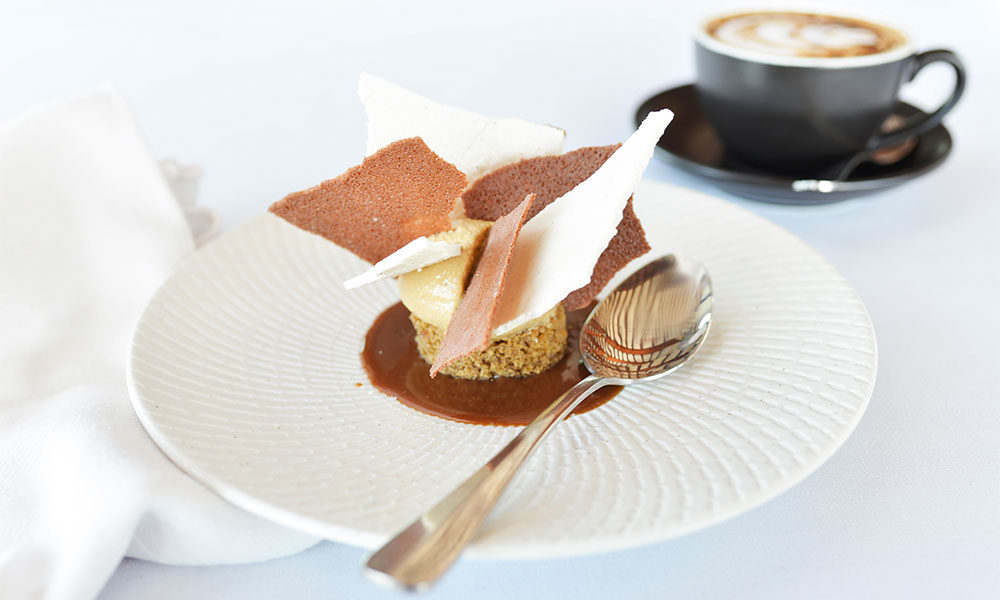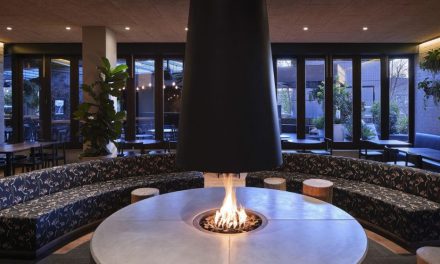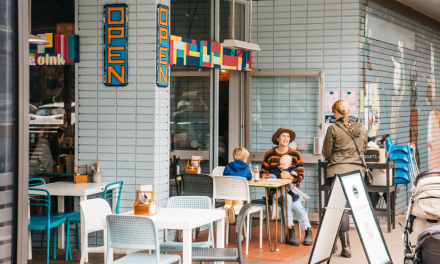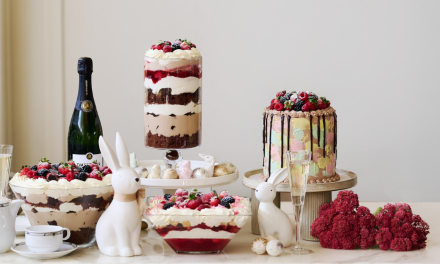The National Arboretum, home of The Conservatory Restaurant has the best views in Canberra! All seats are picture windows from the beautiful Brindabella’s then sweeping across the lake to Black Mountain. Enjoy natures attractions, right here in our backyard, where the nation’s Capital is famous for having a big sky with endless views showcasing colours and textures with a beautiful sunrise, balloon lift or reflected sunset. The Conservatory Restaurant is perfect to show-off our bush Capital to visitors, or to unwind and admire nature’s beauty while tasting Canberra’s freshest regional and seasonal food.
The Conservatory Restaurant combines this unique setting with a sophisticated, fresh, local food experience; it’s not just an unforgettable taste, nor simply an amazing view. Janet Jeffs is Director + Executive Chef of Ginger Catering at The National Arboretum, it is here she entwines the best of what Canberra has to offer and turns it into your experience, where you can enjoy a family breakfast on the weekends, and lunch of the freshest, tastiest, local foods every day.
The winter menu takes you on a trip down country lanes, through orchards and across the farm paddocks of the region. The wild rabbit, pheasant, and Canberra black truffle puff pastry pie, or a Sassafras chestnut and mushroom landscape, Janet’s homegrown rare breed Dexter beef braised with mandarin and Chinese spices are pure winter magic. The parsnip gratin, local Jindabyne trout with Ingelara Nicola potatoes speak of local waterways and fields, from the mountains to the sea, as Canberra’s foodshed enjoys the winter bounty.
Chef Janet Jeffs philosophy of food is imbedded with sustainability and ethical values so that your dining experience is authentic.
“I am a passionate advocate for a food economy that is “good, clean + fair”. Our cooking is based on fresh seasonal ingredients that are produced sustainably. We would like to recognise our local food heroes; Joyce from Allsun Farm for organic vegetables, fruit + eggs, Matthew + Grace from Greendale Farm for free-range pork + eggs, Tobias + Beatrice from Ingelara for biodynamic pork, potatoes + garlic, Sam + Claire from Boxgum Grazing for pastured beef, Alison + Richard Sassafras Nuts, Fiona + Michael from Ainslie Urban Garden for our micro herbs + Charles from La Barre Olive Oil,” Janet says.
Let’s taste! The Venison fillet is perfect for winter and you guessed it, it’s local. It’s seared and seasoned with local Budawang mountain pepper, and juniperberries, then wrapped in nori seaweed which captures all the flavours before being crumbed and fried. The presentation is equally as impressive, sliced to admire the entrée from a side profile and served with balsamic reduction.
Forget what you have been told about pairing white wine with seafood. The octopus is cooked low and slow until very tender, then chargrilled, served with rocket salad, black olive and tomato salsa. The colours on this entrée are vibrant and the depths and layers coincide with the mountainous surroundings.
Smoked apple wood Jurassic quail is big on flavour and combines the essence of wood smoked, an Arboretum feature. Its served with mushroom polenta and winter favourite Jerusalem artichokes. The locally caught rock cod is a seafood sustainable dish from the South Coast. The cod is pan fried and brushed with North African chermoula spices, on Sardinian fregola, a type of pasta, and finished with steamed local clams.
The desserts show off the skills of pastry chef, Kotesh Khandala, and are truly something to marvel over. Janet says, “Wild damsons, winter Nealis pears, quinces and yellow crab apples feature in fabulous desserts and, in time honoured country fashion, are also made into delicious preserves for enhancing leaner seasons.”
The Pinot Noir pears can be described as a cheese course becoming a dessert. A winning combination of cheese, fruit and nuts. Kotesh explains the Ginger Catering version sees the pears cooked in lightly spiced pinot noir with walnut shortbread, goats cheese ice-cream and goats cheese powder. “The powder is made with goat’s cheese, white chocolate and malto,” says Kotesh. “Malto is tapioca maltodextrin and is used to convert fats to powders which then converts to its original form when in contact with our tastes” The final touch of the dish is a garnish of toasted walnuts sourced from local Sassafras Nuts.
The Opera cake, dessert is visual take on the multilayered French cake with the eye-catching twist replicating the Opera House with features National Arboretums Margaret Whitlam Pavilion. Using anise meringue and a combination coffee sponge on gianduja cream, coffee ice-cream and chocolate tuile it’s a fabulous dessert!
